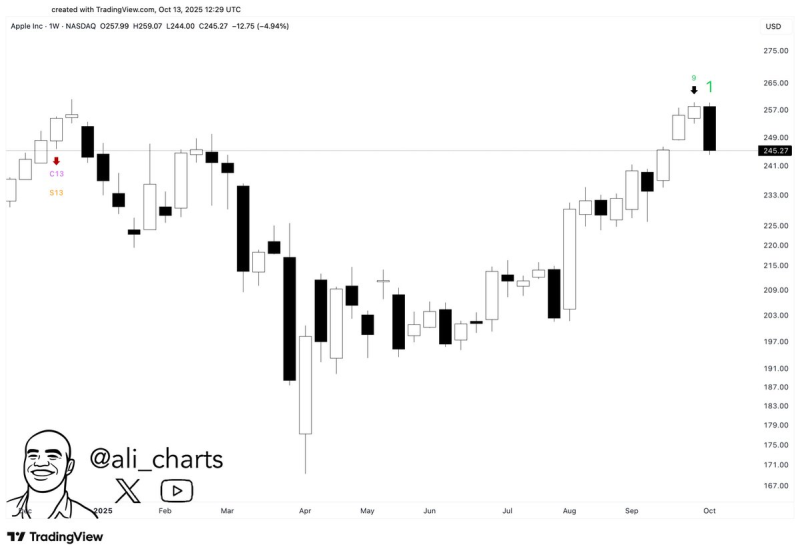Apple (AAPL) shares fell nearly 5% this week following a TD Sequential sell signal on the weekly chart. The pullback comes after an impressive rally that saw the stock climb from spring lows to test major resistance, raising questions about whether the tech giant's momentum has stalled.
Technical Warning Emerges
Market analyst Ali recently highlighted that Apple triggered a TD Sequential "9" sell signal while testing the $260–$265 resistance zone. This indicator, widely used by traders to spot trend exhaustion, suggests the stock's sharp recovery may need a breather.

Key Levels to Watch
Apple mounted an impressive comeback in 2025, surging from April lows near $165 to a September peak just below $265. However, the latest weekly candle shows a sharp reversal to $245, indicating mounting selling pressure. The $260–$265 zone remains a critical ceiling reinforced by the TD Sequential signal. Immediate support sits at $240, the prior breakout level from September, while deeper support emerges around $225, where the stock consolidated during summer. The large bearish candle suggests sellers are taking short-term control, though the long-term uptrend remains intact.
Factors Behind the Decline
Several headwinds appear to be weighing on the stock. Profit-taking after a nearly 50% rally from spring lows is natural at these levels. Broader macro pressures, including higher bond yields and Federal Reserve uncertainty, continue to challenge growth stocks. Concerns about iPhone 16 demand and supply chain resilience persist, while intensifying AI competition from Microsoft, Google, and Nvidia adds another layer of uncertainty.
Looking Ahead
This correction could represent a healthy pause within Apple's broader uptrend. If the stock holds above $240, bulls may interpret it as consolidation before the next leg higher. However, a breakdown below $225 would raise the risk of a deeper pullback. Long-term investors can take comfort in Apple's solid fundamentals—massive cash reserves, robust services revenue, and upcoming AI-driven products. Short-term traders, though, should respect the sell signal and brace for volatility.
 Marina Lyubimova
Marina Lyubimova

 Marina Lyubimova
Marina Lyubimova


